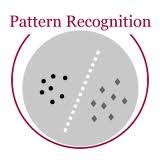Emotion recognition in smart eyewear devices is highly valuable but challenging. One key limitation of previous works is that the expression-related information like facial or eye images is considered as the only emotional evidence. However, emotional status is not isolated; it is tightly associated with people's visual perceptions, especially those sentimental ones. However, little work has examined such associations to better illustrate the cause of different emotions. In this paper, we study the emotionship analysis problem in eyewear systems, an ambitious task that requires not only classifying the user's emotions but also semantically understanding the potential cause of such emotions. To this end, we devise EMOShip, a deep-learning-based eyewear system that can automatically detect the wearer's emotional status and simultaneously analyze its associations with semantic-level visual perceptions. Experimental studies with 20 participants demonstrate that, thanks to the emotionship awareness, EMOShip not only achieves superior emotion recognition accuracy over existing methods (80.2% vs. 69.4%), but also provides a valuable understanding of the cause of emotions. Pilot studies with 20 participants further motivate the potential use of EMOShip to empower emotion-aware applications, such as emotionship self-reflection and emotionship life-logging.
翻译:智能眼罩设备对情感的认知非常宝贵,但具有挑战性。 以往工作的一个关键限制是,面部或眼部图像等与表达有关的信息被视为唯一的情感证据。 然而,情感状态并不是孤立的;它与人们的视觉感知,特别是感人的视觉感知密切相关。 然而,很少研究这种关联,以更好地说明不同情感的原因。 在本文中,我们研究眼罩系统中的情感分析问题,这是一项雄心勃勃的任务,不仅需要将用户的情感分类,而且还需要从语义上理解这种情感的潜在原因。 为此,我们设计了EMOShip,这是一种深层次学习的眼部功能系统,可以自动检测磨损者的情感状态,同时用语气层次的视觉感知觉分析其关联。 与20名参与者进行的实验研究表明,由于情感意识的提高,EMOShip不仅能在现有方法(80.2%对69.4%)上取得较高的情感识别准确度,而且还能对情感的潜在原因提供宝贵的理解。 与20名参与者进行试点研究,进一步鼓励使用EMOShip 的情感,从而增强情感-immodition-modistration imtition-liflistation, imlistal imliflistation, imlistal




